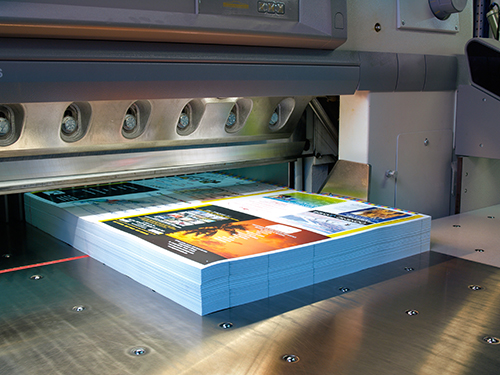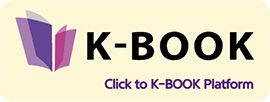|
South Korea's Printing Industry
2017.10.10
Historically, publishing and printing have developed hand in hand. Thanks to the development of printing skills, mass production of paper books became possible and today, cover printing that boosts the tangibility of books, as well as various attempts at editing and the level of completion all depend on high-quality printing skills. Not only is the area of POD (Publishing/Print on Demand) expanding by the day, lying between paper books and e-books, consistent demand is also expected.
Sales of the publishing industry do not solely come from paper books. The market share of e-books, audio books and licensed works is expanding continuously. The printing industry is also relying less on printed publishing and more on industrial printing and packaging printing. From packaging used in everyday goods to special printing used on smartphones, changes that are worth noting in the printing industry have been taking place.
According to data from the Korean Printers Association, South Korea had 19,058 printing operations as of 2015. Of these 94 percent were businesses with less than 10 employees and only 33 had 100 or more workers (0.2 percent). Over the past five years, 2,865 businesses were newly formed and most of these were also businesses with 10 or less workers. In regional terms, 67 percent of these operations were located in Seoul or the surrounding metropolitan area (12,754), in line with other industries.
A total of 75,134 workers were found to be working in the printing industry and 28,483 of them worked at businesses with 10 or more employees. The printing operations had an average 3.7 workers while companies with 10 or more workers had an average 23.5 employees. Like the number of operations in the capital area, 73.8 percent of the workers were also located in the Seoul and surrounding areas. Of those managing the operations, 43.1 percent were in their fifties, while 30.6 percent were in their forties and 18.5 percent were in their sixties. When categorized by gender, 80 percent of the managers were men.
The printing operations were estimated to make annual sales of around 10 trillion won. For those operations with 10 or more employees, they made an average 3.7 billion won in sales per company. Their sales made up nearly half the sales of the entire printing industry at around a total of 4.4 billion won.
As of 2016, exports of printed materials stood at $181.5 million while imports were at $256.0 million. In trade terms, printed materials have been recording trade deficits each year around $68.5 million. Exports and imports of printed materials overall have been on the decline for the past three years, attributed to the broad downturn of the global economy and sluggishness of the printing industry. The biggest markets for South Korea's printed goods are the United States and Japan. When looking at the top three markets including China, exports to the United States, Japan and China stood at $70.3 million, $33.7 million and $10.3 million, respectively. Imports from these three countries measured at $72.9 million, $44.3 million and $48.5 million. South Korea's printing industry runs a trade deficit with China and Japan. The biggest share of printing exports belongs to printed books at 47 percent, or $88.2 million. Calendar exports are also high at $28.3 million.
Currently, the main issues in the printing industry are heated competition, lowered profitability due to the outsourcing structure, decline of young employees, sluggish entry of skilled workers, aging of workers and difficulties exporting. A five-year plan developed by the industry and government for 2017 to 2022 aims to strengthen global competitiveness of the printing industry, develop nature-friendly cutting-edge technology and boost infrastructure overall.
The publication industry has a reproduction structure through the production and sales of publishing content, but the printing industry needs orders to survive. They do not produce and sell printed products, but they start production of products after receiving certain orders. It is imperative these operations receive new orders. If publishing is active, then printing is passive. The two have in common the fact the industries need to build the ability to read the changes of the world and needs of the customers. And the road to the evolution of publishing and printing will lie in the "fourth industrial revolution".
Written by. Won-Keun Baek (Books & Society Research Institute, President) Won-Keun Baek (Books & Society Research Institute, President) |
Pre Megazine
-

Export Prospects of Korean Books
VOL.1
2017.06 -

Current State of Korean Publishing
VOL.1
2017.06 -

Korean Bestsellers Trend in June
VOL.1
2017.06 -

Export Prospects of Korean Books
VOL.2
2017.07 -

South Korea's publishing industry
VOL.2
2017.07 -

South Korea's July Bestsellers
VOL.2
2017.07 -

Export Prospects of Korean Books
VOL.3
2017.08 -

South Korea's digital publishing industry
VOL.3
2017.08 -

South Korea's August Bestsellers
VOL.3
2017.08 -

Export Prospects of Korean Books
VOL.4
2017.09 -

Changes in South Korea's reading demographics
VOL.4
2017.09 -

South Korea's September Bestsellers
VOL.4
2017.09 -

Export Prospects of Korean Books
VOL.5
2017.10 -

South Korea's Printing Industry
VOL.5
2017.10 -

South Korea's October Bestsellers
VOL.5
2017.10 -

Export Prospects of Korean Books
VOL.6
2017.11 -

South Korea's Key Publishing Related Organizations
VOL.6
2017.11 -

South Korea's November Bestsellers
VOL.6
2017.11 -

Export Prospects of Korean Books
VOL.7
2017.12 -

South Korea's Major Online Bookstores
VOL.7
2017.12 -

South Korea's December Bestsellers
VOL.7
2017.12 -

Export Prospects of Korean Books
VOL.8
2018.01 -

South Korea's budding publishing experts
VOL.8
2018.01 -

South Korea's January Bestsellers
VOL.8
2018.01 -

Guadalajara Book Fair 2017 Book from Korea
VOL.8
2018.01 -

Export Prospects of Korean Books
VOL.9
2018.05 -

South Korean Government Policies to Shore Up the Publishing Industry
VOL.9
2018.05 -

South Korea's April Bestsellers
VOL.9
2018.05 -

Overseas Publication Grants
VOL.9
2018.05 -

Overseas Publication Grants
VOL.10
2018.06 -

Aggregate data as of the fifth week of May
VOL.10
2018.06 -

South Korea’s Digital Publishing Contents Platform
VOL.10
2018.06 -

Export Prospects of Korean Books
VOL.10
2018.06 -

South Korea's June Bestsellers
VOL.11
2018.07 -

Overseas Publication Grants
VOL.11
2018.07 -

South Korea’s Library Status
VOL.11
2018.07 -

Export Prospects of Korean Books
VOL.11
2018.07









